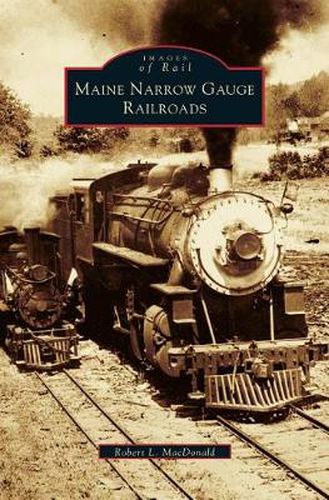Readings Newsletter
Become a Readings Member to make your shopping experience even easier.
Sign in or sign up for free!
You’re not far away from qualifying for FREE standard shipping within Australia
You’ve qualified for FREE standard shipping within Australia
The cart is loading…






This title is printed to order. This book may have been self-published. If so, we cannot guarantee the quality of the content. In the main most books will have gone through the editing process however some may not. We therefore suggest that you be aware of this before ordering this book. If in doubt check either the author or publisher’s details as we are unable to accept any returns unless they are faulty. Please contact us if you have any questions.
The narrow gauge railroad arrived in the United States in the late nineteenth century. Based on the Welsh two-foot gauge, the American narrow gauge was expanded by railroad engineers to a three-foot gauge that became the standard track width for narrow gauge railroads in the United States. Maine, however, adopted the two-foot gauge that was developed by George E. Mansfield in Massachusetts. The narrow track width was ideally suited to the mountainous terrain, and the maneuverability of the trains proved highly beneficial to companies and passengers traveling to remote locations. The narrow gauge railroad served Maine for over fifty years until the early 1940s.Maine Narrow Gauge Railroads is a comprehensive pictorial record of the history of the narrow gauge railroad in Maine. From the one-hundred-twelve-mile Sandy River and Rangeley Lakes Railroad to the five-mile Kennebec Central, Maine Narrow Gauge Railroads features the toylike miniature trains of Maine as they appeared at different stages in their history. The Bridgton and Harrison Railroad, the Monson Railroad, and the Wiscasset, Waterville and Farmington Railway lines are documented within, as well as the current restoration projects that are under way.
$9.00 standard shipping within Australia
FREE standard shipping within Australia for orders over $100.00
Express & International shipping calculated at checkout
This title is printed to order. This book may have been self-published. If so, we cannot guarantee the quality of the content. In the main most books will have gone through the editing process however some may not. We therefore suggest that you be aware of this before ordering this book. If in doubt check either the author or publisher’s details as we are unable to accept any returns unless they are faulty. Please contact us if you have any questions.
The narrow gauge railroad arrived in the United States in the late nineteenth century. Based on the Welsh two-foot gauge, the American narrow gauge was expanded by railroad engineers to a three-foot gauge that became the standard track width for narrow gauge railroads in the United States. Maine, however, adopted the two-foot gauge that was developed by George E. Mansfield in Massachusetts. The narrow track width was ideally suited to the mountainous terrain, and the maneuverability of the trains proved highly beneficial to companies and passengers traveling to remote locations. The narrow gauge railroad served Maine for over fifty years until the early 1940s.Maine Narrow Gauge Railroads is a comprehensive pictorial record of the history of the narrow gauge railroad in Maine. From the one-hundred-twelve-mile Sandy River and Rangeley Lakes Railroad to the five-mile Kennebec Central, Maine Narrow Gauge Railroads features the toylike miniature trains of Maine as they appeared at different stages in their history. The Bridgton and Harrison Railroad, the Monson Railroad, and the Wiscasset, Waterville and Farmington Railway lines are documented within, as well as the current restoration projects that are under way.